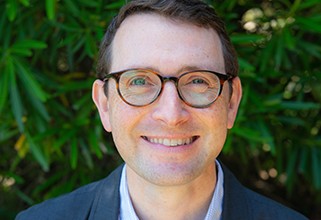Clergy Column by Rabbi Heath Watenmaker

Why Are There Two Adars?
February/March 2024
If you look closely at your Hebrew calendars, you may notice that this year we have two Adars. In the Hebrew calendar this year is a leap year1, and instead of adding just one day every four years as we do in our secular solar calendar, in the Hebrew calendar we add a full month seven times in nineteen years. Trust me, somehow the math works out. But why?
The answer: Passover. While many of us think of the Hebrew calendar as just a lunar calendar in which months follow the cycles of the moon, that’s not entirely accurate. The Hebrew calendar is known as a soli-lunar calendar because while the months do follow the cycles of the moon, it’s also important that certain holidays remain connected to a particular season of the year. The Hebrew calendar is different, for example, from the Muslim calendar which is completely lunar, in which holidays move around throughout the year. For example, the month-long holiday of Ramadan, in which Muslims fast from sunrise to sunset every day, sometimes falls during the winter and sometimes during the summer (making for a much longer fast). But this is not quite how the Jewish calendar operates.
Back to Passover. In the Torah we read, “Observe the month of Aviv/spring, and keep Passover unto the Eternal your God; for in the month of Aviv the Eternal your God brought you forth out of Egypt by night” (Deuteronomy 16:1). The rabbis came to understand this reference to the month “Aviv,” which translates as “spring,” to mean that Passover must occur in the spring, in the month we now know as Nissan. And so they introduced the concept of a leap month to intercalate the calendar every so often to ensure that Passover occurs in the spring. In the Mishneh Torah, Maimonides explains:
A leap year is a year in which another month has been added. And we only ever add an Adar and make two Adars, an Adar Rishon (first Adar) and an Adar Sheini (Second Adar). And why do we add this month? Because of the spring time, so that the Passover will fall at that time, as it is said (Deuteronomy 16:1) "Guard the month of the spring", that this month should be in the spring. And if it wasn't for the addition of this month, Passover would sometimes come in the days of the sun (the summer) and sometimes in the days of the rain (the winter). (Mishneh Torah, Sanctification of the New Month 4:1)
In fact, a number of our holidays have additional agricultural names that are connected to the seasons in which they fall: Passover is also known as Chag HaAviv (Festival of Spring); Shavuot is known as Chag HaKatzir (Festival of the [wheat] Harvest) and Chag HaBikurim (Festival of the First Fruits); and Sukkot is known as Chag HaAsif (Festival of the Ingathering [of the fall] Harvest)
And so as we enter February, we’ll mark the beginning of Adar 1 at sundown (or moonrise) on February 9, and then on the evening of March 10 we’ll mark the beginning of Adar 2. Because Purim is in Adar, the rabbis also must figure out in which Adar we celebrate. They came up with a clever solution: because the focal point of our calendar is Passover, we celebrate Purim in the month closest to Passover: that is, Adar 2. But to give a nod to Purim, we celebrate Purim Katan, a “mini-Purim” in Adar 1, to acknowledge its rightful place in the calendar. The rabbis explain that Purim and Passover should occur near each other in the calendar because they want to connect one festival of “redemption with [another festival of] redemption” (Kitzur Shulkhan Aruch Yalkut Yosef 1:688). These two holidays are thematically linked by their focus on the Jewish people’s survival and redemption from those forces that would wish us harm.
In the Talmud we read, “When Adar begins, one increases rejoicing” (Taanit 29a). It is a time of year when joy is commanded. But, when there is a leap year and there are two Adars, rabbinic commentators vary on when, exactly, we’re commanded to be joyous. They seem to recognize that commanding two full months of joy is simply too much. One response to this is Purim Katan — so we can get a little bit of rejoicing out of our system before the big show in Adar 2. Rabbi Dalia Marx, in her book From Time to Time: Journeys in the Jewish Calendar, notes that in a leap year, Adar 1 seems to become a “phantom month.” She explains, “All the events [of a normal Adar] — including Purim, Moses’ birthday and the anniversary of his death (both on the seventh of Adar), and even birthdays — are marked during Adar 2, not Adar 1.” Regardless, Adar is a reminder that spring is on the horizon and that even if it’s a little ways away, the time of rebirth and renewal is coming soon. The holidays of this season — both Purim and Passover — serve as reminders that even when it feels as if we are in the midst of cold, dark days — whether seasonally or metaphorically as a people — warmer, brighter days lie ahead. And for that, we must rejoice.
Rabbi Heath Watenmaker
rabbi_watenmaker@betham.org
________________
1 In Hebrew, a leap year is called a Shanah Meuberet, literally a “pregnant” year.

 We strive to live as a holy community whose study and practice of Judaism inspires and challenges us to "do justice, to love kindness and to walk humbly with our God" (Micah 6:8).
We strive to live as a holy community whose study and practice of Judaism inspires and challenges us to "do justice, to love kindness and to walk humbly with our God" (Micah 6:8).